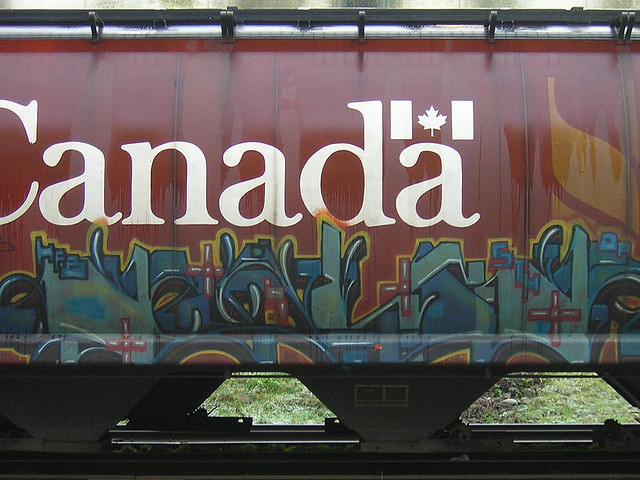The practice of painting graffiti on freight trains as a medium to send images away from their points of production into a system of wider circulation has become widespread within graffiti practice (Ferrell 1998). Graffiti, when engulfing whole buildings or a part of a wall, has the ability to become a marketing tool for artists to promote themselves via the streets either openly or anonymously (Rafferty 1991); however, tags and images on freight trains provides a different avenue where artists are able to promote themselves across wide geographical and cultural areas.
This form has significant value to the artists and their work. An advantage to posting on freight trains comes with the ability to expand one’s art spatial. It appears that the trains work as a conveyer belt for the promotion of artists, their work and cultural meaning. The circulation reflects the liminal space for the graffiti; a transitional phase before reaching potential viewers. The wider circulation of art may also broaden the graffiti community due to how quickly it spreads geographically acting as a communications network. As Ferrell (1998) notes, freight work allows graffiti writers to communicate with one another and with their audience by sending images and identities into areas outside of their immediate reach. It is not to say that mobile art via trains is more valuable than stable art. Each form of art has its own added value for artists and viewers. Train art allows a broad network for communication and expression of ideas and culture due to art being sent into wider circulation.
Sources:
Ferrell, Jeff
1998 Freight Train Graffiti: Subculture, Crime, Dislocation. Justice quarterly 15(4):587-608.
Rafferty, Pat
1991 Discourse on Difference: Street Art/Graffiti Youth. Visual Anthropology Review 7(2):77-84.
By Kayla Morley

